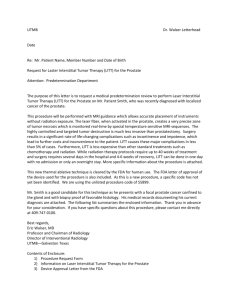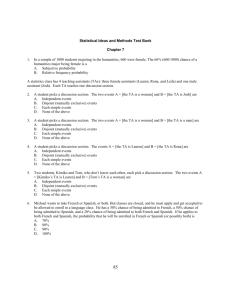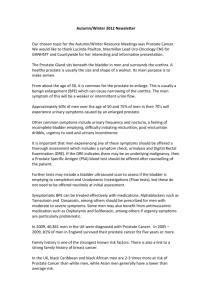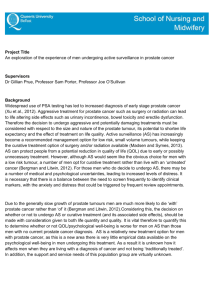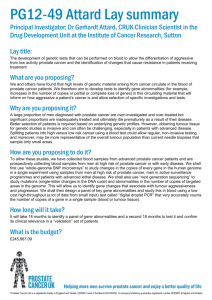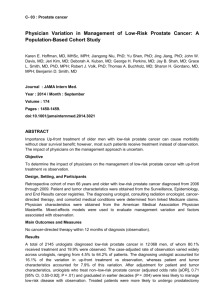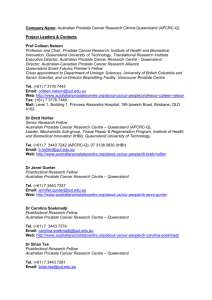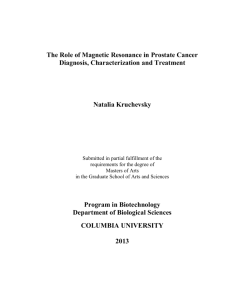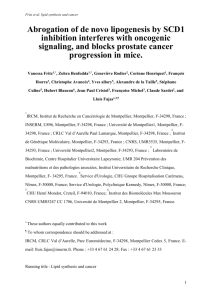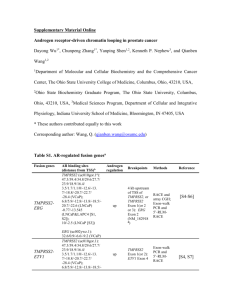Dissecting the expression of EEF1A1/2 genes in human prostate
advertisement
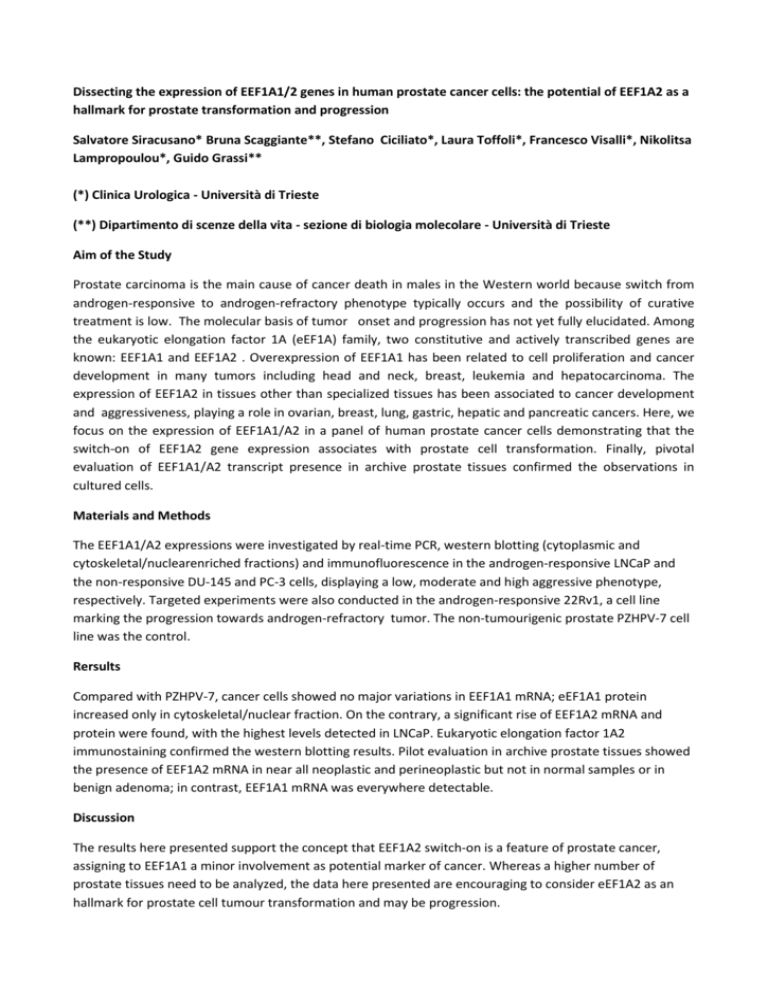
Dissecting the expression of EEF1A1/2 genes in human prostate cancer cells: the potential of EEF1A2 as a hallmark for prostate transformation and progression Salvatore Siracusano* Bruna Scaggiante**, Stefano Ciciliato*, Laura Toffoli*, Francesco Visalli*, Nikolitsa Lampropoulou*, Guido Grassi** (*) Clinica Urologica - Università di Trieste (**) Dipartimento di scenze della vita - sezione di biologia molecolare - Università di Trieste Aim of the Study Prostate carcinoma is the main cause of cancer death in males in the Western world because switch from androgen-responsive to androgen-refractory phenotype typically occurs and the possibility of curative treatment is low. The molecular basis of tumor onset and progression has not yet fully elucidated. Among the eukaryotic elongation factor 1A (eEF1A) family, two constitutive and actively transcribed genes are known: EEF1A1 and EEF1A2 . Overexpression of EEF1A1 has been related to cell proliferation and cancer development in many tumors including head and neck, breast, leukemia and hepatocarcinoma. The expression of EEF1A2 in tissues other than specialized tissues has been associated to cancer development and aggressiveness, playing a role in ovarian, breast, lung, gastric, hepatic and pancreatic cancers. Here, we focus on the expression of EEF1A1/A2 in a panel of human prostate cancer cells demonstrating that the switch-on of EEF1A2 gene expression associates with prostate cell transformation. Finally, pivotal evaluation of EEF1A1/A2 transcript presence in archive prostate tissues confirmed the observations in cultured cells. Materials and Methods The EEF1A1/A2 expressions were investigated by real-time PCR, western blotting (cytoplasmic and cytoskeletal/nuclearenriched fractions) and immunofluorescence in the androgen-responsive LNCaP and the non-responsive DU-145 and PC-3 cells, displaying a low, moderate and high aggressive phenotype, respectively. Targeted experiments were also conducted in the androgen-responsive 22Rv1, a cell line marking the progression towards androgen-refractory tumor. The non-tumourigenic prostate PZHPV-7 cell line was the control. Rersults Compared with PZHPV-7, cancer cells showed no major variations in EEF1A1 mRNA; eEF1A1 protein increased only in cytoskeletal/nuclear fraction. On the contrary, a significant rise of EEF1A2 mRNA and protein were found, with the highest levels detected in LNCaP. Eukaryotic elongation factor 1A2 immunostaining confirmed the western blotting results. Pilot evaluation in archive prostate tissues showed the presence of EEF1A2 mRNA in near all neoplastic and perineoplastic but not in normal samples or in benign adenoma; in contrast, EEF1A1 mRNA was everywhere detectable. Discussion The results here presented support the concept that EEF1A2 switch-on is a feature of prostate cancer, assigning to EEF1A1 a minor involvement as potential marker of cancer. Whereas a higher number of prostate tissues need to be analyzed, the data here presented are encouraging to consider eEF1A2 as an hallmark for prostate cell tumour transformation and may be progression. Conclusions Eukaryotic elongation factor 1A2 switch-on, observed in cultured tumor prostate cells and in human prostate tumor samples, may represent a feature of prostate cancer; in contrast, a minor involvement is assigned to EEF1A1. These observations suggest considering EEF1A2 as a marker for prostate cell transformation and/or possibly as a hallmark of cancer progression


